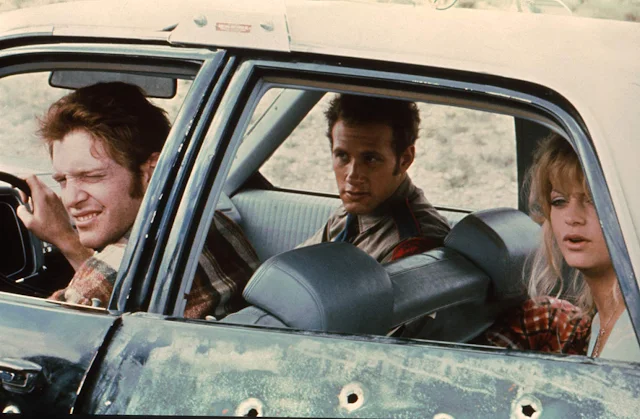 |
| Dennis Weaver in Duel (Steven Spielberg, 1971) |
Cast: Dennis Weaver, Jacqueline Scott, Eddie Fierstone, Lou Frizzell, Gene Dynarski, Lucille Benson, Tim Herbert, Charles Seel, Shirley O'Hara, Alexander Lockwood, Amy Douglas, Cary Loftin. Screenplay: Richard Matheson. Cinematography: Jack A. Marta. Art direction: Robert A. Smith. Film editing: Frank Morriss. Music: Billy Goldenberg.
Of course the protagonist of Steven Spielberg’s Duel is named David Mann. David vs. Goliath, man vs. machine, get it? This entertaining mashup of a road rage fable with a monster movie launched one of the greatest careers in movie history, and it began in that once-maligned medium, the TV movie. After its modest success as an ABC Movie of the Week – it was only 18th in the rankings of TV movies for 1971, but got good reviews and, more importantly, attracted industry notice – it was expanded into a theatrical feature that played internationally and had a limited release in the United States. Spielberg added the opening sequence of the car leaving the garage and hitting the road, wittily filmed from the point of view of the car, establishing it as much a character in the film as its driver (Dennis Weaver). Mann’s phone call home to his wife (Jacqueline Scott) was added, their unresolved quarrel making his nervousness and irritability more credible. Adding the sequence with the stalled school bus gave Spielberg a chance to heighten the suspense by showing the tanker truck as a malevolent, lurking monster with a single-minded focus on Mann – after he escapes, the truck gives the bus the push it needed. But even in the original version, the scenes at the gas station and in the diner are enough to establish Mann’s isolation and helplessness. Spielberg’s insistence on location shooting in rural Los Angeles County and along the Sierra Highway – the producers wanted to control the budget by faking a lot of the movie in the studio – adds immeasurably to the sense of Mann’s solitary plight. Spielberg often has trouble ending his movies – viz., the cemetery coda to Saving Private Ryan (1998) and the extended epilogue to Schindler’s List (1993), both of which have stirred critical debate – but he found the right one for Duel, with his victorious David tossing pebbles into the wreckage of the vanquished Goliath.







